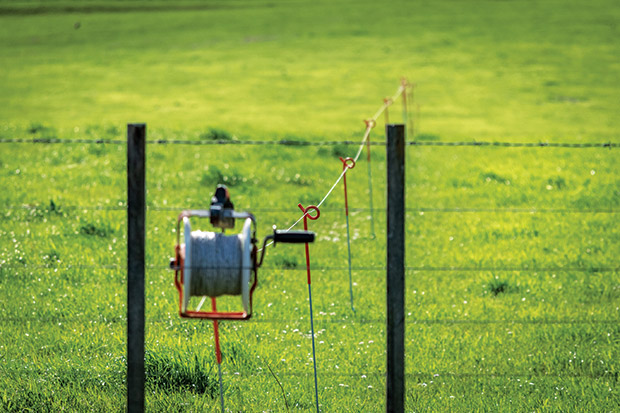A pasture-friendly way to feed stock in winter

Break-feeding is a good strategy for rationing pasture over winter.
Words: Nadene Hall
Break-feeding is a useful strategy for portioning out pasture over winter. Here are the basics.
1. Use electrified tape/wire and pigtails to create long, narrow strips (known as ‘breaks’) of pasture.
2. If you have small paddocks, try zig-zagging the electric fence rather than making it a straight line, to prevent dominant cattle from pushing more timid ones off the new grass.
3. Have a second fence to prevent animals from walking back over previously grazed pasture, which damages plants and compacts soil. If you back-fence, you’ll need a portable water trough (see box at right).
4. There are pasture feed calculations you can do to work out how big an area your cattle need each day to gain (or maintain) weight. Talk to a local professional farmer or your vet for advice, especially if you have pregnant animals.
5. Move cattle onto pasture that’s 11-15cm high (when it’s at its most nutritious). Move them off it when the pasture is down to around 5cm high.
6. Cattle need to eat good quality pasture for about 4-6 hours a day to gain weight. By the end of the day, if pasture is around 5cm high, you’ve got the break size right. If they’ve eaten down much lower, are walking around looking for more food, and mooing, you need to make the ‘break’ larger, and/or feed out hay/silage.
7. Feed hay or silage before you move cattle onto a new ‘break’, so they’re less likely to trample it by running onto it in excitement.
4 TIPS IF YOU’RE BACK-FENCING
■ Buy a portable trough that can roll across the ground.
■ Have the trough in the middle of a break, attached to a fence if possible.
■ Start the first break at the back of a paddock, and work your way towards the gate. This makes it easier to move the trough across ungrazed grass, instead of fouled pasture.
■ Bend the ballcock arm, so the trough only gets half-full, making it easier to empty it when you need to move it.
Love this story? Subscribe now!
 This article first appeared in NZ Lifestyle Block Magazine.
This article first appeared in NZ Lifestyle Block Magazine.

